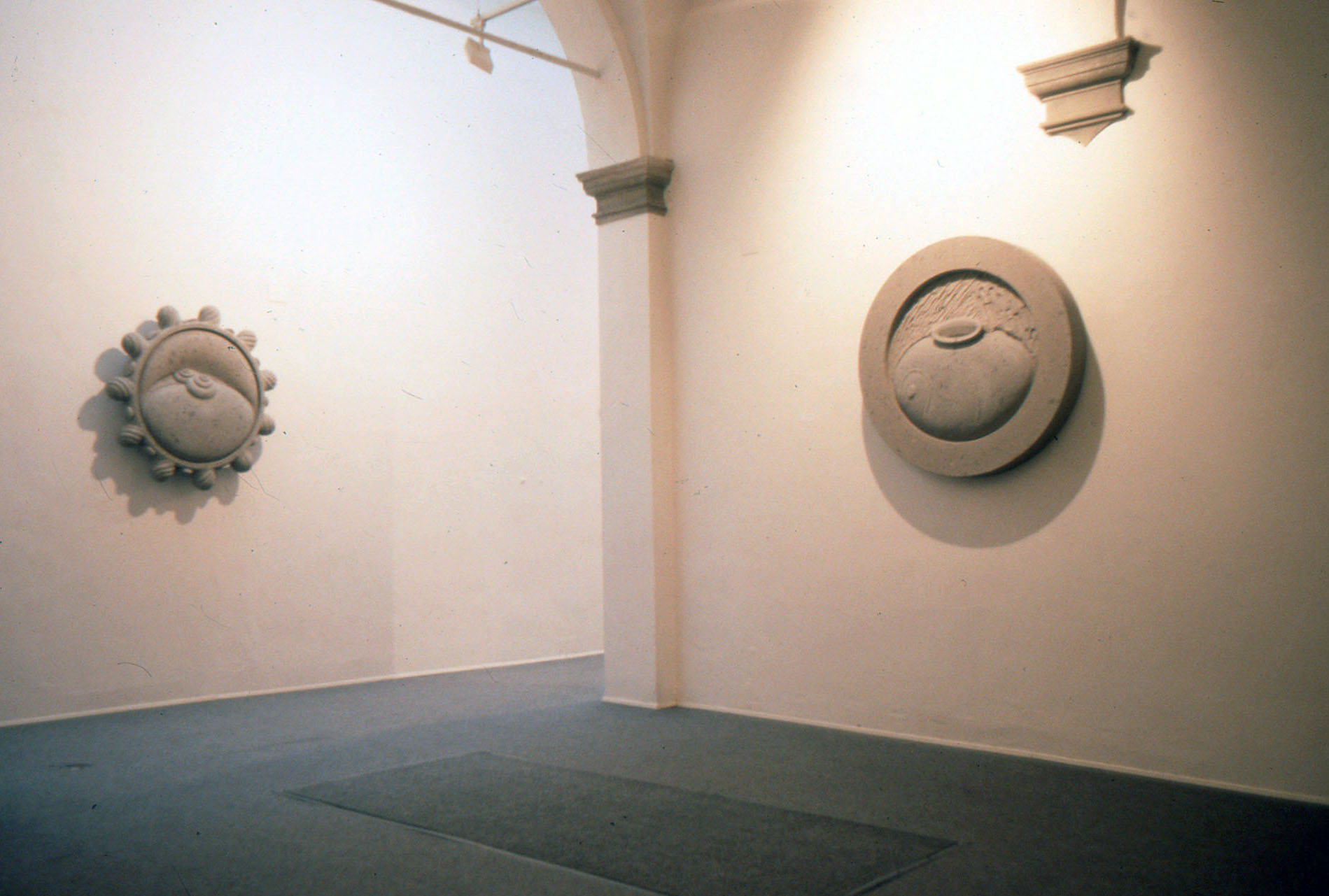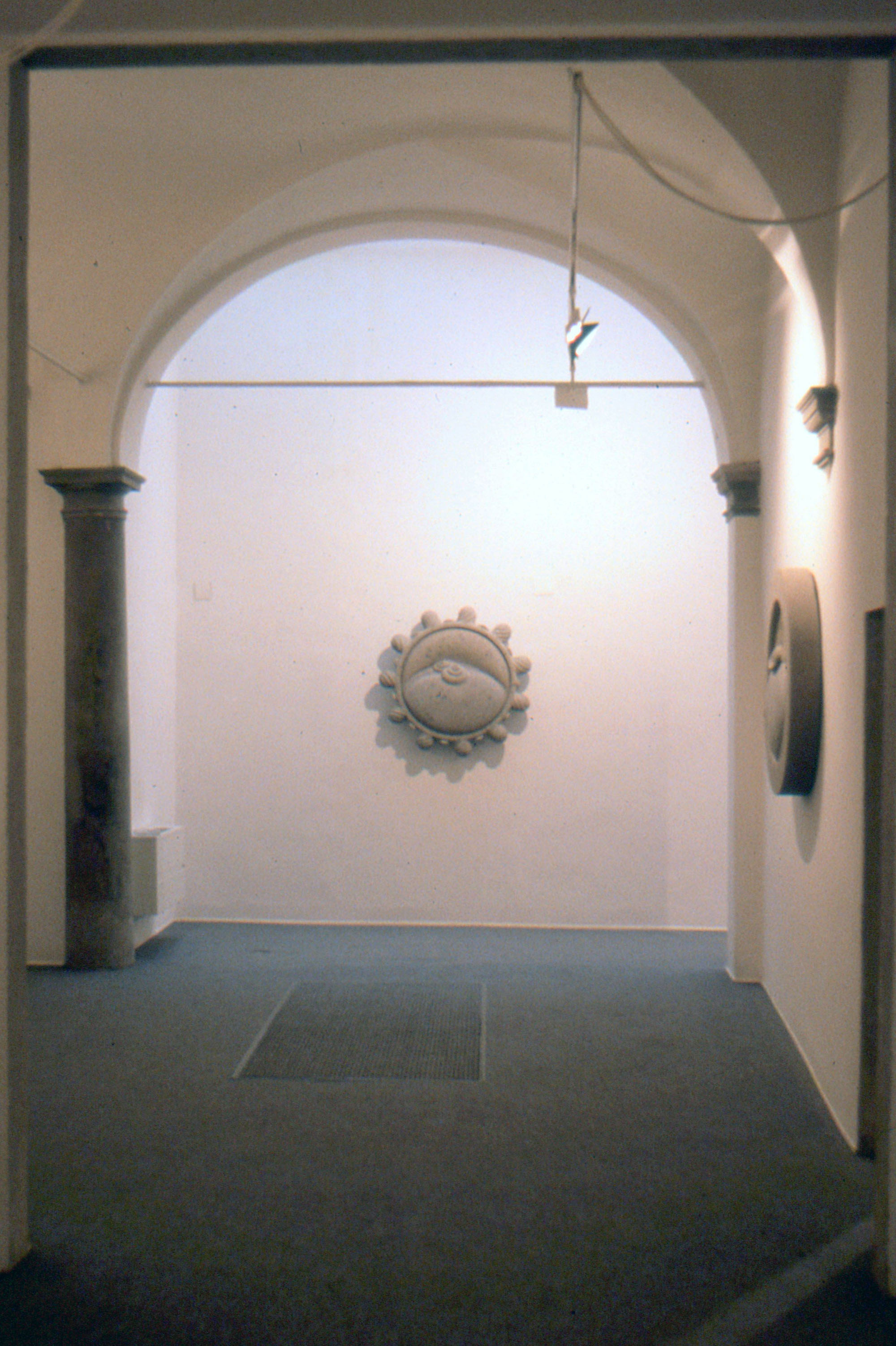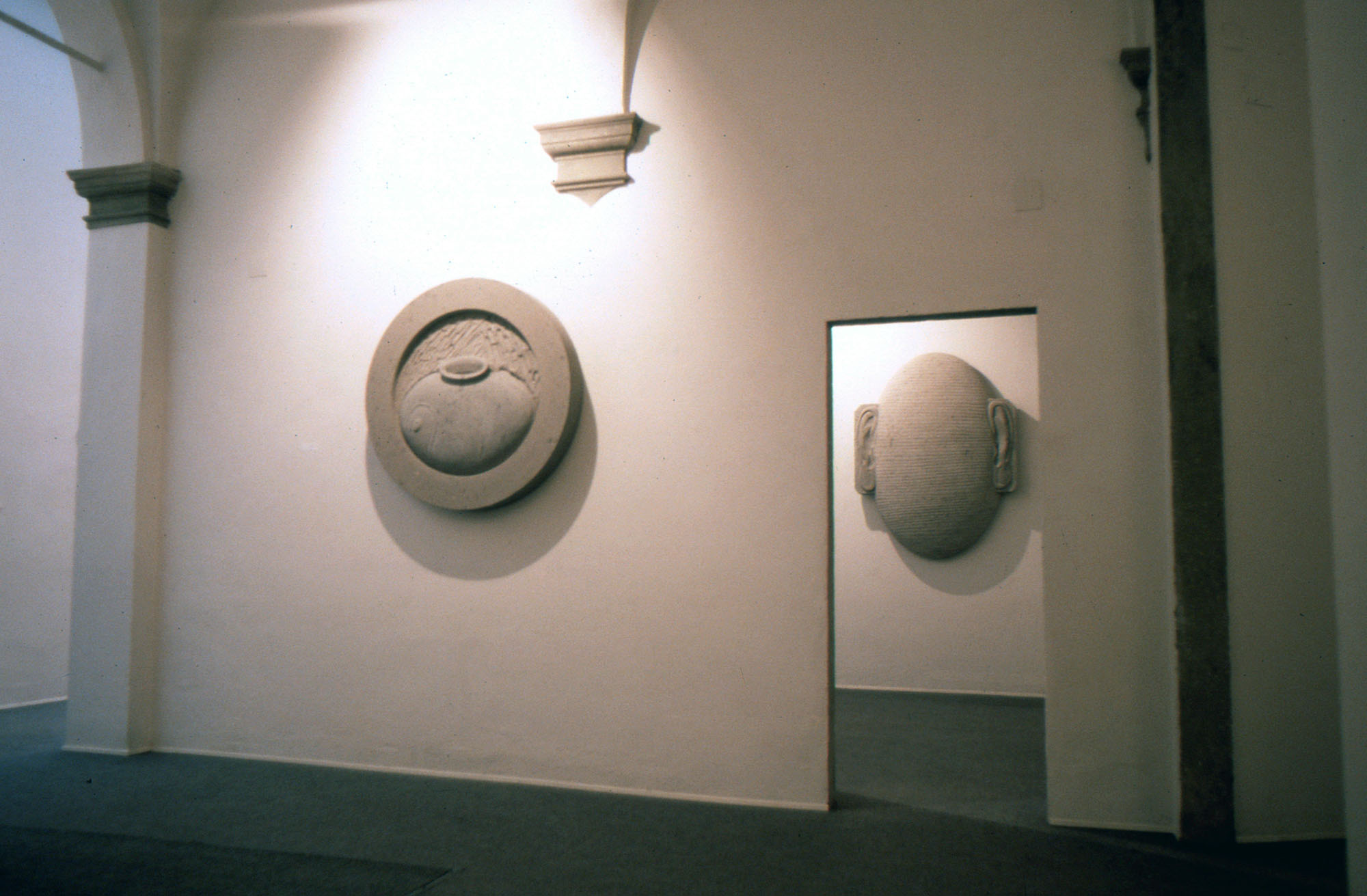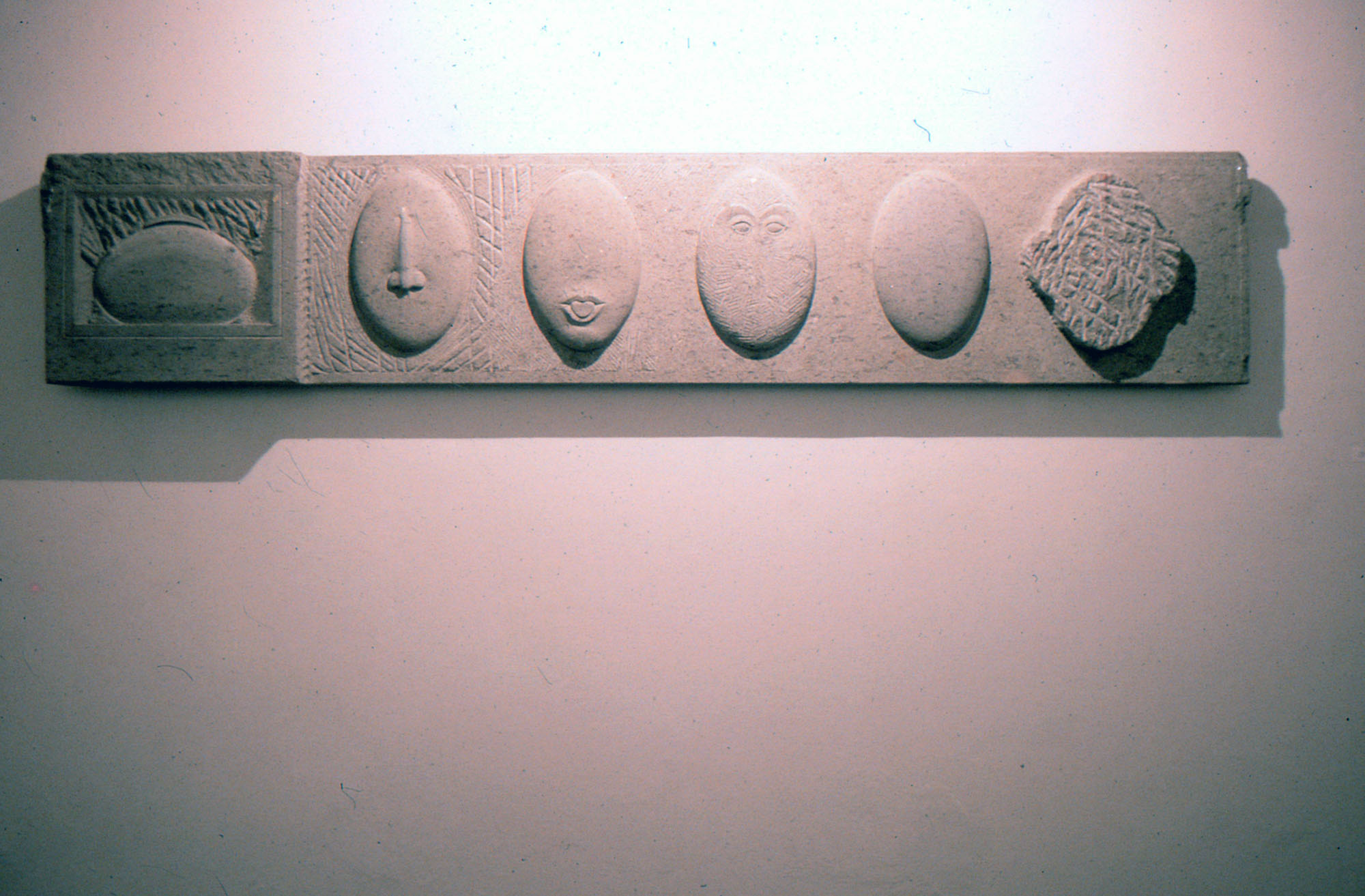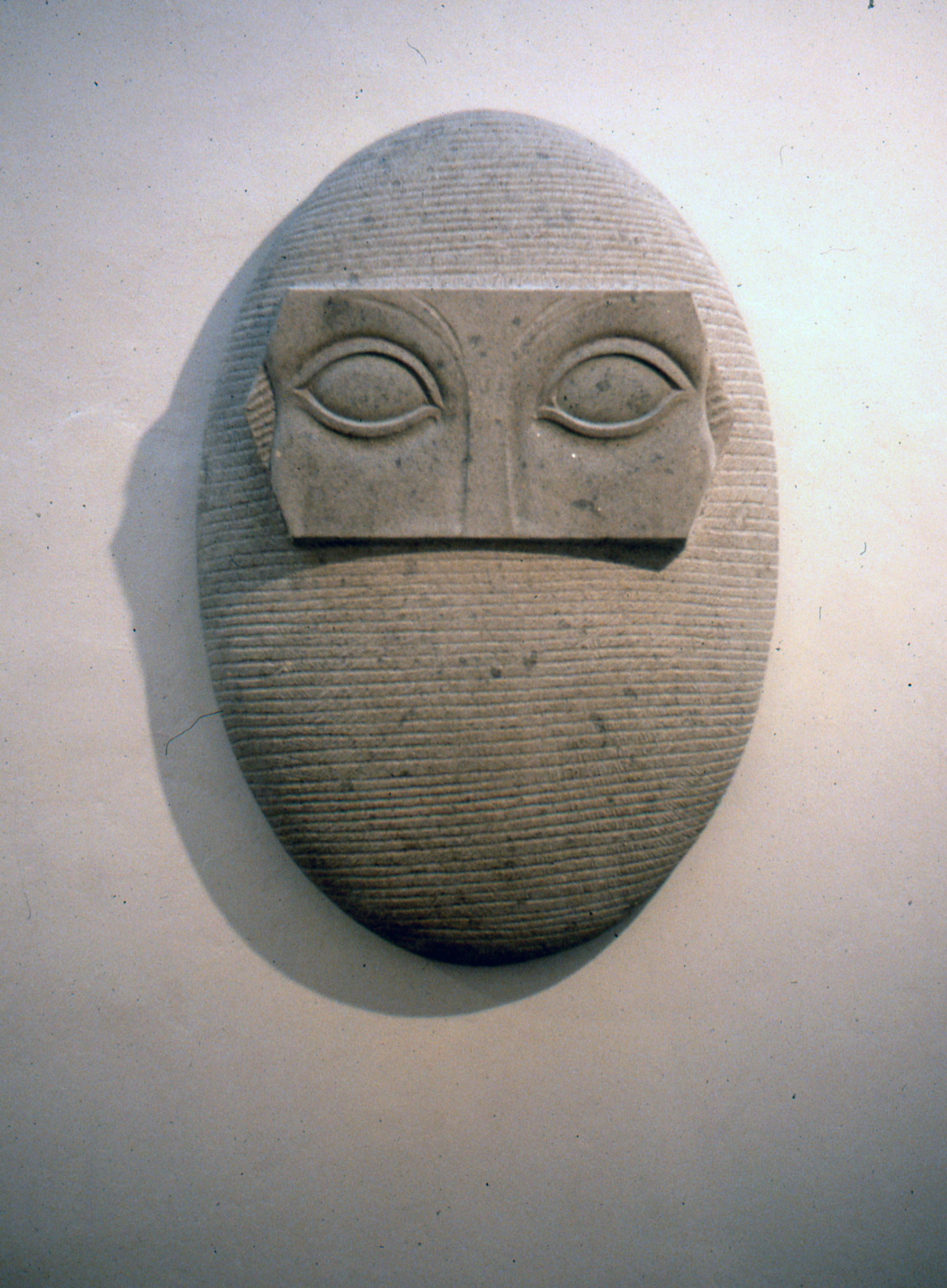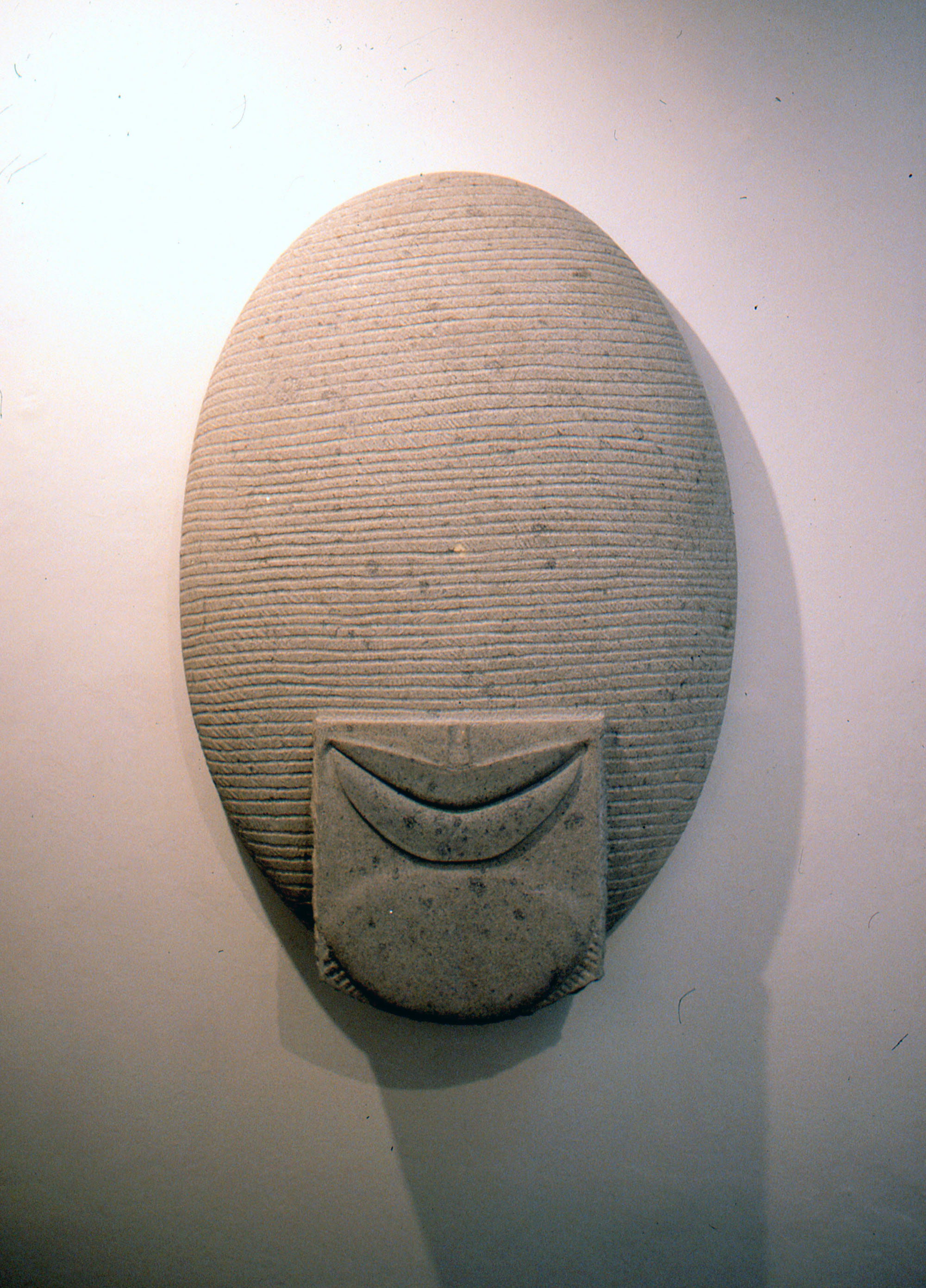RISHI I , 1989 Basalt, ( variously: dolerite or black ‘granite’ or Charnockite).
175 x 90 x 45 cm including base
The Rishis are regarded as sages or seers who, after intense meditation, realized the supreme truth and eternal knowledge which they then translated into hymns. Stephen Cox’s sculpture entitled “Rishi I” represents a figure with the minimum intervention made on to the stone itself. The stone, basalt, was taken from a place where some of the oldest stones on the Earth’s surface can be found. It shows the scars and incisions of the quarry men who have used the most primary tools to release the block from its bed, where it has lain since long before the beginning of human recorded time. This act of releasing stones from a primordial era and bringing them into the light of today is central to Cox’s practice, as he strives to understand a universal language of sculpture.

